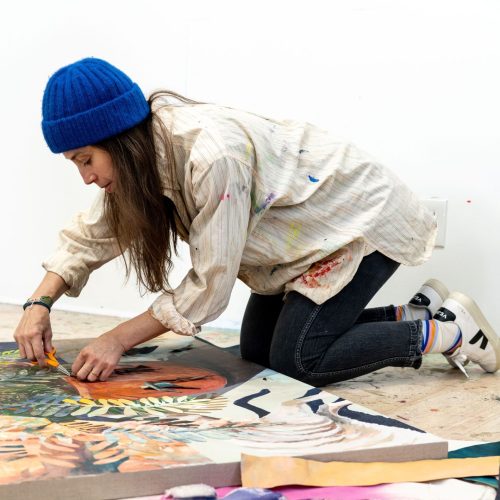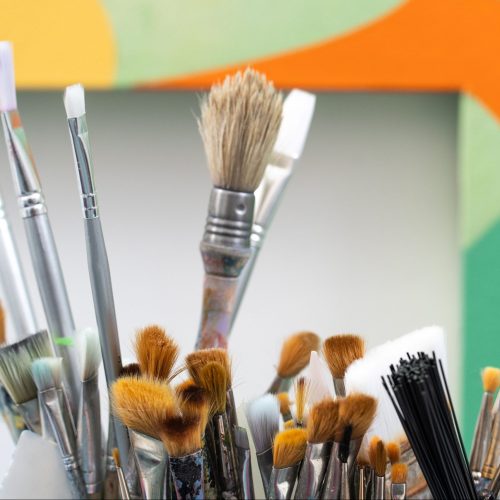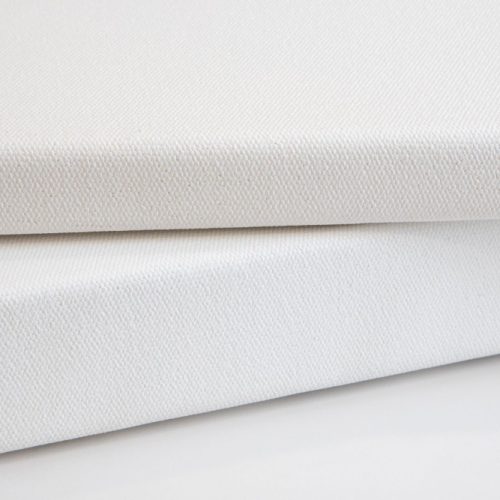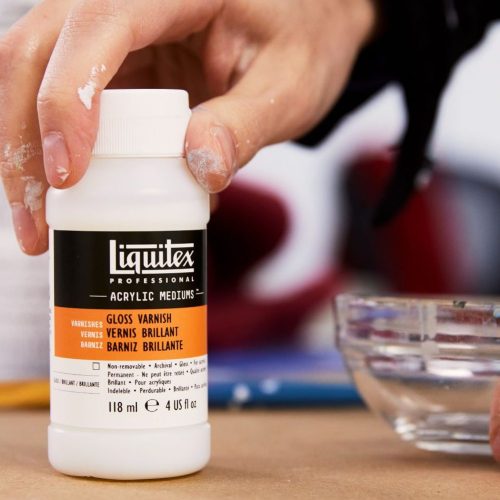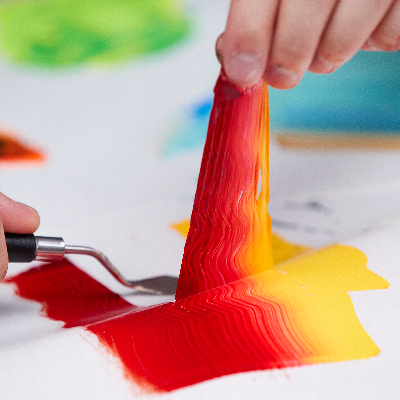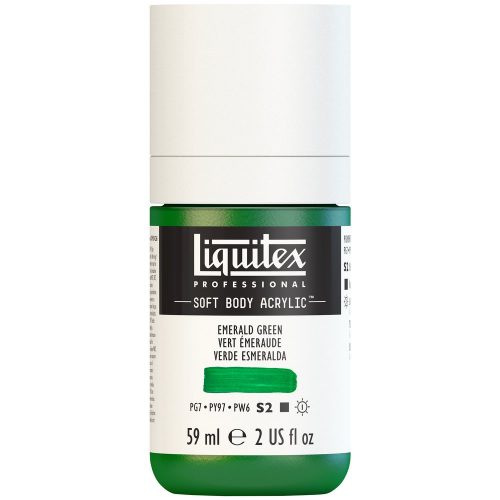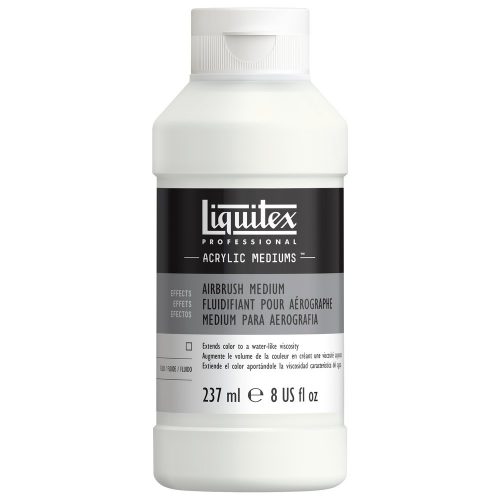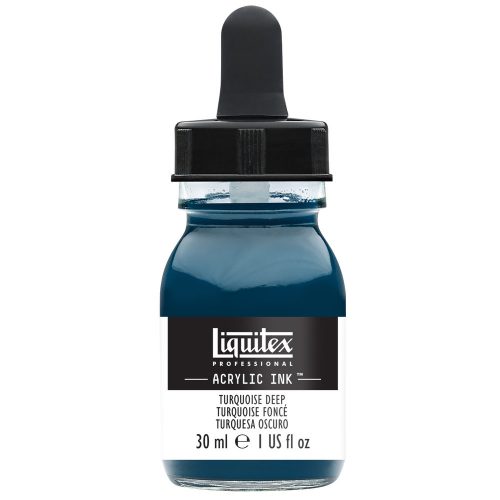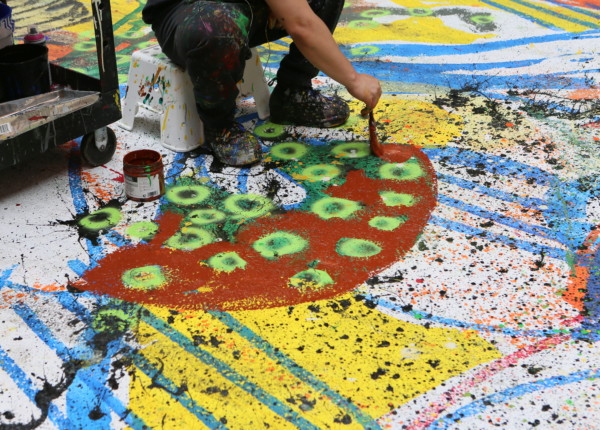Airbrushing
Airbrush painting allows you to create the illusion of shadows, transparency and subtle shading effects that are not easily replicated with traditional brushes or palette knives.
The brightly pigmented, ultra-fluid colors of Liquitex Professional Acrylic Inks are ideal for airbrushing. They do not need to be thinned, have little to no odor and are easily cleaned up with water. If you want to use a Soft Body color, we suggest thinning it first with Liquitex Airbrush Medium to get to the desired consistency.
SURFACE PREP
- It all depends on the surface you want to airbrush and the durability level you want to achieve. Surfaces absorb paint differently so always perform a test if you are uncertain
- Wash fabric before airbrushing to remove sizing
- Non-absorbent surfaces (plastic, metal, masonry etc) should be abraded before spraying to increase adhesion
WHAT SHOULD I USE TO THIN MY COLOR?
- The proper viscosity will depend on the air pressure, type of airbrush and proximity to the working surface. You want to achieve a light cream consistency or thinner
- Liquitex Acrylic Ink doesn't need thinning, but if you are using a Soft Body paint we recommend thinning with Airbrush Medium. This will ensure that the colors do not lose their flexibility, durability and adhesion as it contains specific additives to slow drying, improve flow and decrease clogging
- You can also use diluted Flow Aid Additive - add up to 80% diluted Flow Aid (1:1 ration with Soft Body gives a good result) to the paint and mix thoroughly. The amount may vary due to individual pigment characteristics. Diluting reduces pigment color strength
- If using Soft Body, strain your thinned color to ensure proper flow through airbrush
TIPS
- Have patience when airbrushing - building up tones gradually will allow colors to appear brighter and more even
- Mix your colors optically rather than mixing them together before spraying - for example Naphthol Crimson sprayed over Cadmium-Free Yellow Light will produce a more vibrant orange than if you mixed the two colors together first
- To help judge the darkness of a sprayed area, place a sheet of white printer paper next to the area. The contrast will make the level of darkness clearer
- Decrease the air pressure on the airbrush to create spattered or stippled effects
- When working on textiles, your color must permeate the cloth and be seen as a ghost image on the reverse side to be permanent. Allow to cure for three days before washing or dry cleaning
- Liquitex iridescent and metallic colors contain mica flakes that may require a larger airbrush nozzle and greater air pressure for consistent spraying
- Diluting color increases transparency
- Absorbency will diminish with successive airbrush layers
- Always work in an area with good air circulation
- Masking will cover and protect areas you don't want to spray as the spray can travel a long way
- If your mixture is too thick, either increase the air pressure or add more Airbrush Medium. As the paint is thinned, your air pressure can be lowered and the airbrush held closer to the working surface for greater detail. As the air pressure is increased the airbrush should be held further from the working surface
MASKING TECHNIQUES
Masks cover and protect areas you don't want to paint. You can use stencils, friskets or masking paper for larger areas
Stenciling
- This is a thin sheet of material with a cut-out shape/pattern
- You can use them in two ways: positive stencils, where you spray through the holes, or negative stencils, where you hold shapes on your surface and spray over them
Using frisket/masking fluid
- This is a thin vinyl film with a low tack adhesive on one side, to protect covered areas from overspray
- If an area has been painted, allow to completely dry before applying the frisket
- Burnish your frisket to make sure it’s flat, with no air bubbles
- To improve adhesion of your frisket film to canvas, use a fine weave canvas and apply 1-2 coats of Liquitex Gloss Medium over the area that is to be covered
- Using a sharp razor knife and light pressure, carefully cut the frisket to your desired shape, then remove the unwanted frisket and apply next color
- Do not allow frisket or tape to remain on the surface for periods longer than a day
Tape
- To achieve straight lines or attach masking materials, use drafting or Scotch tape in the same way as frisket. It has a low adhesive tack, which will not damage painted areas when removed
Protecting delicate airbrush areas on canvas for masking
- Allow sprayed area to dry fully
- Use a clean, soft brush or spray application and carefully coat area with Liquitex Gloss Medium. Allow to dry
- Continue airbrush application over painting surface as needed
- Repeat as necessary
AIRBRUSH CARE
While working
- Back flush clean water through the airbrush periodically
- Paint build-up on the tip of the airbrush needle and in the spray cap should be removed regularly
- Occasionally remove the needle for a more thorough cleaning
- Airbrush should be stored in a container of water (with tip submerged) when not being used
- Do not immerse the entire airbrush in water
Final clean up
- Water-soluble paint can be easily cleaned from the airbrush while wet - do not allow acrylic paint or mediums to dry in the airbrush
- Backflush your airbrush with water, Liquitex Pen Cleaner, an ammonia-based window cleaner or an airbrush cleaner
- Allow some cleaner to remain in the airbrush for about 15 minutes to loosen any stubborn deposits
- Follow this by spraying water through the brush until clean
- Clean the outside of the airbrush with denatured alcohol
- If anything is stubborn and dried on, soak the airbrush parts in a dish of Liquitex Pen Cleaner until softened and able to be removed
- Do not soak plastic washers, seals or handles in alcohol
HEALTH WARNINGS
- When spraying, use an effective dust or particle mask, approved by NIOSH
- Your airbrush enclosure should have adequate ventilation, with vent for incoming air and fan exhaust
- Always keep your work areas clean of airbrush overspray
- Do not eat or smoke in the studio
- Read your paint labels - cadmium and cobalt pigments are toxic in mist (spray) form and may be cancer causing if inhaled - they should be avoided if airbrushing. Instead Liquitex cadmium-free and “hue” colors are non-toxic in mist and should be used in place of cadmium and cobalt colors
ESSENTIALS
- Protective mask
- Acrylic Ink / Soft Body Acrylic - the optimum paints to use
- Airbrush Medium/diluted Flow Aid Additive - to thin your color
- Pen Cleaner - to clean out your airbrush
